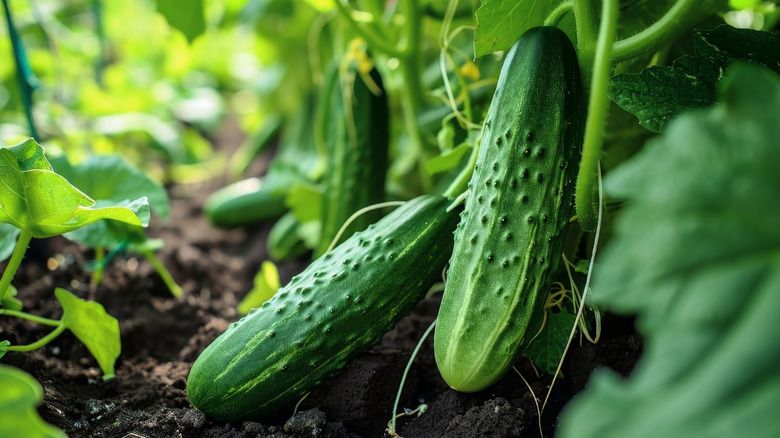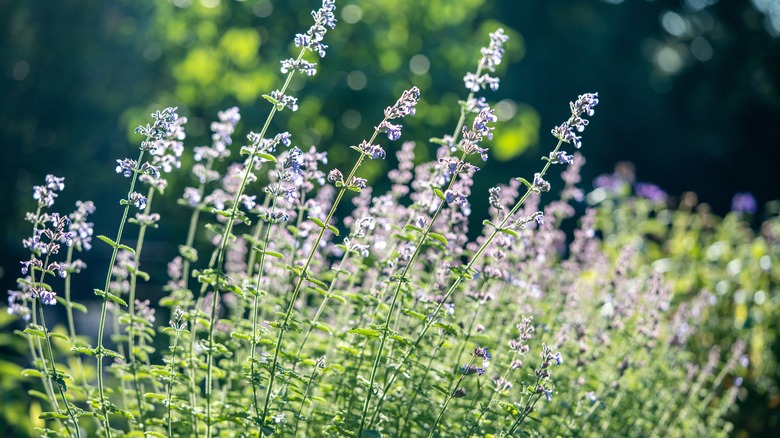The Fast-Growing Herb You'll Want To Plant With Cucumbers For A Top-Tier Harvest
If you want a rich harvest of cucumbers this year, there's an herb you'll want to plant. Catnip (Nepeta cataria) does more than thrill felines; it also encourages better growth in cucumbers. Surprisingly, catnip is a companion plant that can ward off pests from garden cucumbers thanks to its active chemical component known as nepetalactone. Nepetalactones can help repel common cucumber pests such as flea beetles, cucumber beetles, aphids, and cabbage loopers. Once planted, it helps protect cucumbers from severe damage, including defoliated plants, tiny leaf holes, stem destruction, and bacterial wilt.
Scientists are still studying the effects of catnip's essential oils in pest control, but the results are promising for plants as well as humans! When the catnip emits nepetalactone, it can deter pests, possibly by acting on a chemical pain receptor in them so they stay away. In the case of aphids, the chemical mimics aphids' sex pheromones to attract aphid predators, such as lacewing flies. In addition to warding off pests from cucumbers, catnip can attract pollinators to your garden when it flowers with its small purple blooms, resulting in bees and wasps flitting among your garden, helping pollinate your crops. If you're looking for a form of natural pest control for your plants, catnip is a great choice. It's easy to grow and thrives in most conditions. When it's not repelling cucumber pests, you can break it off to give to your cat or use it as a DIY insect repellent. Here's everything you need to grow this beneficial companion plant for healthy cucumbers.
Growing catnip with cucumbers
Suited for USDA Hardiness Zones 3 through 9, catnip can grow quickly from seed and is easily sown in winter. You can also use a small plant from a nursery, just make sure it's healthy. Sow or transplant at least two weeks after the last frost date, planting your catnip close to the cucumber to best enjoy the pest-repelling properties. Catnip does best when it has 12 inches to 3 feet of space for planting. You can plant in nearly any soil as long as it drains well. Water regularly, being careful not to make your plant soggy, allowing it to dry between watering sessions. Catnip is nearly drought-tolerant once established. With the right conditions, catnip can grow up to 3 feet tall and wide, potentially blocking sunlight from your cucumbers. Don't let this herb shade cucumbers too much, and trim as needed. You can force more compact growth by pinching its leaves. If you find pollinators visiting, shear the first flowers off to encourage more blooms.
Adding catnip may bring all of the cats to the yard, whether your own or neighborhood strays! Not every cat reacts to catnip, but curious felines can crush the plants to release the scent that drives them wild and keep the bugs away. Use fences or other deterrents to keep cats out of your garden beds. Catnip is known to grow quickly and can take over without proper management. It's also important to note that although technically a weed, it isn't listed as an invasive plant, except in West Virginia.

